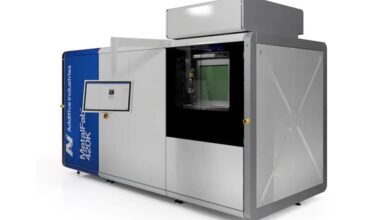Print Management Done Right and Efficient – Your Partner of Choice


Ahmad Alkasaby, Marketing Director of Saudi Xerox talks about finding the right print management partner
Managed Print Services (MPS) are becoming increasingly popular and there is no question that when it comes to Print management partnering with a reliable solution provider, will yield a more comprehensive print strategy with more benefits.
Print management has moved far beyond fixing machines and managing supplies. Now it’s a key strategic consideration for your business, helping you operate more efficiently, cut costs, streamline processes and provide better service to employees and customers.
Print management providers are raising their game, and offerings are constantly evolving to meet the needs of a fast-changing marketplace. But not all MPS solution providers are created equal, and you should take the time to properly evaluate their print management offerings and find out whether they can meet the needs of your organization.

Saudi Xerox offers industry-leading print management services, to help customers navigate and streamline their end-to-end printing operation. By offering continuous production and machine service optimizations, Saudi Xerox enables printers to bring down the cost of everyday operations, freeing them from constraints of time and the nuisance of scheduling. On the other hand, Saudi Xerox proved itself to be digital transformation champion in the Kingdom helping printers automate their entire process and create added value for their customers. Meanwhile. automation and print management require a whole new mindset and a different approach from customers as well. Saudi Xerox helps printers and companies adapt to the new post covid realities as well as the future.

In order to find out what are the essential considerations before jumping to print management bandwagon we sat down with Ahmad Alkasaby, Marketing Director of Saudi Xerox and here are the excerpts:
-
When it comes to choosing the right company to handle our print management services What is the first criteria to assess a print management supplier?
How secure is their solution? A large number of organizations said they’d had a print-related data breach. That’s a pretty sobering statistic, and one we all need to be concerned about. Printing breaches could be anything from confidential information lying around in printer trays waiting to be collected, to unauthorized access of documents stored on your network or in the cloud. Not to mention the security challenges posed by the unstoppable rise of bring your own device (BYOD).
Robust security is an absolute must when it comes to a print management solution. Be sure to ask your prospective provider:
How they secure data as it moves from computers to printers
How they release that information securely
Whether or not they can set you up with access controls for different users
Just as important, make sure their print management security works seamlessly with your existing security setup.
-
How can I make sure they offer the flexibility and integration I need?
One size definitely doesn’t fit all when you’re looking at print management solutions. Every organization’s setup is different, so you should find out whether your MPS solution provider has the flexibility to adapt to your environment.
From single-server and single-site, to complex multi-server, multi-location and even multinational infrastructures, the solution should scale with ease and handle any level of complexity. It should support print servers, direct IP printing, or a combination of both, and help you optimize your infrastructure for cost, ease of management, and user experience. Integration with your existing IT setup is vital, so that there’s minimal disruption during rollout (or after). Most organizations have a complex IT ecosystem, so an MPS solution needs to coexist seamlessly with existing vendors, technologies and processes.
-
What about reporting capabilities?
Print management solutions shouldn’t take a set-and-forget approach. Your print environment is constantly evolving, so extracting insight from data is crucial for continuous improvement.
In deed You should look for reporting capabilities that are dynamic: analyzing and monitoring usage in real time to help you improve security, accountability and efficiency. Ideally, you should be able to drill down to get to the detail behind the headline numbers and customize reports so they’re directly relevant to your goals and KPIs.
Look into report generation and schedules, as well as delivery mechanisms (e.g. email or dashboard). Also, find out if the print management company has the in-house expertise to turn raw data into business intelligence, so they can add value to your bottom line.
-
Does Print management suppliers in general offer a one-size-fits-all solution or a tailored one?
It’s important when you’re evaluating an MPS solution that you’re getting true ROI – that you’re paying for what you’re using, but no more. A modular approach with flexibility is a must if you’re to fully benefit from the cost savings the solution can deliver. You can add modules as your organization grows and your needs change. And just as importantly, you can remove modules if you need to scale back. This flexible, pay-as-you-go approach optimizes your return on investment and ensures predictable, budgetable costs. Make sure you aren’t being tied down by a rigid contract.

-
How complicated print management solutions are?
Your print management solution needs to balance the sometimes-opposing needs of users and your IT department. Users want easy, friction-free printing anywhere, at any time, on any device. They should be able to access, route, scan and share documents easily and efficiently, whether they’re on-site, on the move, or working from home. But that freedom and flexibility shouldn’t come at the price of an increased burden on your IT department. They want a solution that’s easy to configure and administer, as they add printers and users, and adapt to the changing demands of a busy print environment.
-
Are they scalable?
This is a key question to ask your MPS solution provider. No print environment stands still as a company grows and expands. New users, departments and offices, both at home and abroad, make for a complex setup. Add in new technologies and working practices, such as mobile working and a flexible, scalable approach is a must. So it’s crucial to ask if there are limits on the number of MFPs a solution can handle, and how it will manage multi-site or multi-national infrastructures.
-
I assume cost saving is a crucial feature of MPS, how can I make sure the solution supplier is offering cuts the overall cost of day to day print operations?
Make sure you ask your MPS solution provider whether their offering gives detailed insight into print usage and costs, identifying areas for savings and efficiencies. You should be able to get a detailed breakdown of usage patterns that you can slice and dice any way you want – by user, device, department, print server or office. You can see whether you’re getting maximum return on infrastructure investment (analyzing under- or over-utilised printers), operating as efficiently as possible (with printer locations optimized for workgroups) and achieving economies of scale (ordering supplies centrally and proactively).

-
What if I opt for custom- built solutions developed in-house?
Many print management solutions are developed in-house. On the face of it, that’s great. The downside is that they’re often not full-service offerings. So they’re not as robust as a partner solution that’s backed by industry expertise and extensive, hands-on experience across thousands of customers over many years. Custom-built solutions are often overtaken by the rapid pace of change and are unable to adapt to new technologies or scale with speed and ease. A partner solution is built on industry best practices, and constantly evolves to handle the latest technological advances and working practices.
With so much choice among print management companies, asking the right questions is essential. Getting the answers to your questions will help you make the right choice – for your users, IT department, customers and business.
“As Saudi Xerox, we ensure that our customer experience is focused on smooth transition from current challenges to resilient offerings on value added services, making us a strong and reliable partner on the long run in KSA” said Ahmad.
About Saudi Xerox
Saudi Xerox is the representation of Xerox in Saudi Arabia. It was established in 1986, with business lines that include providing solutions to improve business processes, automation, and printing technology through an innovative vision of maximizing productivity and efficiency to create a better work environment. Saudi Xerox offers the full array of Xerox products and services ranging from workplace assistants, workflow solutions and managed print services in the KSA market. We address global and local market challenges consistently together in alignment with Xerox global standard. For more information, please visit www.saudixerox.com





